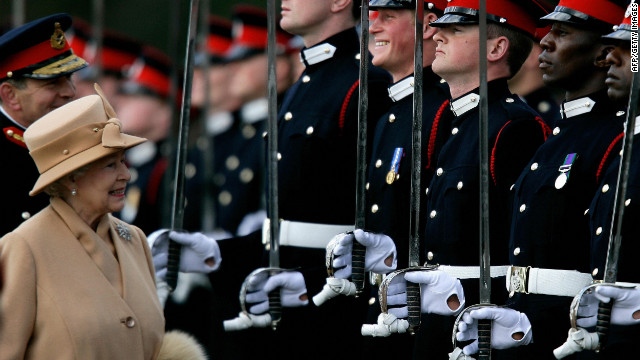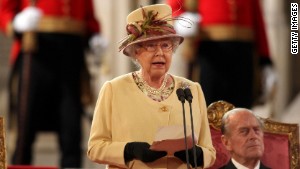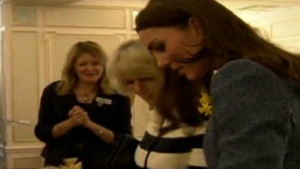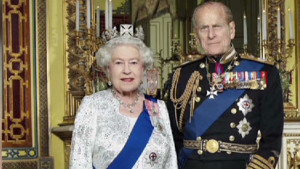As Burma opens up, migrant workers dream of home
Migrants working in Thailand say democratic changes in Burma could enable them to return.
By Somchai Huasaikul and Samila Nararanode for Khabar Southeast Asia in Hat Yai
April 30, 2012Like many among the ethnic Mon community in the southern Thai province of Phuket, Aur Yee and his wife Khin Myowin are excited about changes taking place in Burma and are hoping to go back.
"We're definitely going home," said Khin, 31."We are preparing ourselves and trying to save up enough money to open our own business there. I'm very confident that Aung San Suu Kyi will help us now that a real democracy is being established."
Khin and her husband have lived in Phuket for six years and their three-year-old daughter travels with them to the various worksites where they are sent by their Thai employer. Aur, 38, was doing construction work at a home in a recently completed residential estate in Phuket when Khabar Southeast Asia spoke to the couple.
In a sudden transformation that caught many in the global community by surprise, Burma's junta-sanctioned civilian rulers have taken bold steps to re-establish democracy. The changes raise hope that Burma will be able to emerge from its longtime international isolation and boost its stagnant economy.
For migrants who have travelled to Thailand for a chance at making a livelihood, the news could mean long-cherished hopes will come true.
Like many Burmese, 30-year-old Yao has no last name. He came to Thailand ten years ago and has since been employed in construction. A legally registered worker, his paperwork is taken care of by those who hired him.
"About 70%" of workers from Burma currently working in Phuket are now planning to leave," he told Khabar.
Yao himself is looking forward to going back and seeing his family in Rangoon, but said it would take him until October to save up the funds for the journey. For Thai employers, recent developments are less of a cause for celebration. Some fear a mass exodus of migrant workers could hurt the local economy--especially a real estate market that has been booming for decades.
"It is quite certain that some of the Burmese, but not all, are leaving and going back to their country at the moment," Tanan Tanpaibun, a prominent Phuket-based businessman and head of the Phuket Real Estate Association, told Khabar."They are getting jobs at places like Dawei."
He was referring to the port city where the Burmese government is building its first special economic zone and industrial estate.
"Also, I think the situation in Burma is quite stable now," Tanan said. "They have opened up the country, so I think there will be more going back.
"All of the contractors are complaining about problems with the Burmese workers now, because there are fewer and fewer of them. Those that remain jump from site to site for wage increases of as little as 10 baht (32 cents) a day, they tell me."
Large Bangkok-based development companies with projects in Phuket tend to hire contractors in the capital Bangkok, where many workers are Thai. These companies' operations in Phuket probably won't be too badly affected by any exodus of Burmese workers. But local contractors who do the bulk of the building projects in Phuket rely very heavily on them. They could be very badly affected if a mass migration takes place, he said.
Rough conditions
The sight of Phuket workers, mostly ethnic Mons, packed into the back of lorries and dump trucks, at times during torrential downpours, is so common that most residents take little note of it. The workers mostly live in camps at construction sites, hastily thrown together from wood and corrugated zinc panels.
A Thai senate panel that met on the island a few years ago said there could be as many as 200,000 Burmese workers on Phuket alone. About 660,000 Thais live and work on Phuket according to Ministry of Interior estimates.
It is estimated some two million people from Burma work in Thailand, most illegally.
Some hold work papers under a system set up by the Thai government to allow low-wage workers from three neighbouring states to work in Thailand, but most do not.
A system set up by the Thai and Burma governments to issue temporary passports and work visas to migrant workers from Burma, Cambodia and Laos is widely regarded as a failure. It is expensive, time consuming and requires workers to verify their nationalities back in their own countries.
However, the Burma government does not recognise all people living in its territory as citizens, making verification impossible. Many Burmese citizens fear that releasing the required information could put families back home in jeopardy or cause other problems.
In Phuket, 99% of workers in the programme are either Burmese or people from lands controlled by the government of Burma, according to the Phuket Employment Office. Most do back-breaking jobs in the construction, rubber tapping and fishing industries that Thais do not want.
Others find work in the huge Phuket tourism industry, which despite the number of migrant workers, still has a large labour shortage.
Many Burmese workers arrive in Thailand by crossing at the border province of Ranong, often with the help of human traffickers
In April 2008, 101 Burmese workers were packed into the refrigerator compartment of a seafood truck en route from the Ranong border to Phuket. Fifty-four died of suffocation, including an 8-year-old girl.
One company that helps workers from Burma get work permits and find job is the Noom Broker company.
Noom Broker representative Panida Rodnikorn said in addition to the construction industry, scores of other low-wage positions are held by Burmese workers in Phuket hotels, schools, hospitals, shops and other service-industry businesses.
It is too early to say what effect the changes in Burma will have on the Phuket labour market, Panida said.
This view is shared by Thitinan Pongsudhirak, who directs Institute of Security and International Studies at Chulalongkorn University.
"It depends on how things shape up in Burma. There will be a lot of business there, of course, but it will take time. In the medium term, I don't rule out they will go back and look for work there. But it is all about jobs, where the jobs are and where the pay is. If they can have some of that in Burma, then yes – we will see some return, but don’t forget that we are looking at a more integrated labour market," he said.
"Mons can come and go. They'll make their calculations based on where the jobs are. In ethnic minority areas, it is still not so easy. Many ceasefire agreements are quite tentative, and they have to start [economic production] from scratch," Thitinan said.
"So give it six months and see what happens. I wouldn't be surprised to see many of them coming back here."



![Phuket resident Khin Myowin, an ethnic Mon, with her daughter Karn (left) and a young cousin. Mons are easily identified by the swirls of beige powder they apply to their faces. As Burma's government takes some positive steps, including holding elections, towards re-establishing democracy, many Burmese migrant workers are considering a return to their homeland. [Samila Nararanod/Khabar]](http://khabarsoutheastasia.com/shared/images/2012/04/30/120501-SOMCHAI_TH_MIGRANTS1-310_207.jpg)
![Burmese worker “Yao” said he expects 70% of workers from Burma to leave Phuket. But some of the mostly ethnic Mons work in Thailand illegally and the Burmese government does not recognise all residents as citizens, leaving many migrant workers nationless. [Somchai Huasaikul/Khabar]](http://khabarsoutheastasia.com/shared/images/2012/04/30/120501-SOMCHAI_TH_MIGRANTS2-310_207.jpg)

 Since the death of Diana, the queen's popularity has enjoyed a revival as she continues to preside over what appears to be a softer, more accessible modern royal family. Here, she attends her grandson, Harry's graduation from the Royal Military Academy at Sandhurst, southern England in 2006.
Since the death of Diana, the queen's popularity has enjoyed a revival as she continues to preside over what appears to be a softer, more accessible modern royal family. Here, she attends her grandson, Harry's graduation from the Royal Military Academy at Sandhurst, southern England in 2006.





